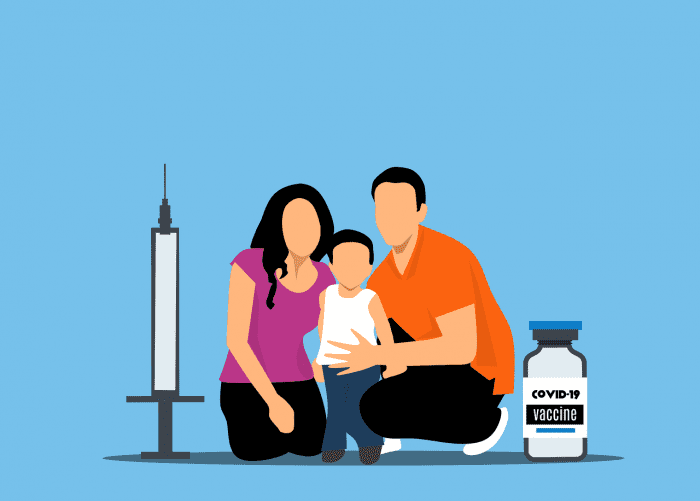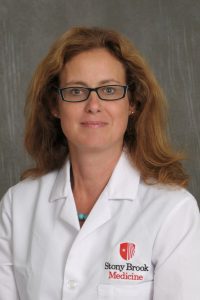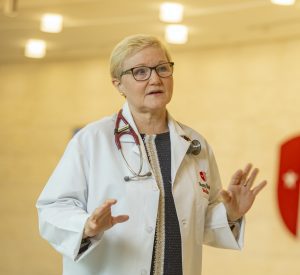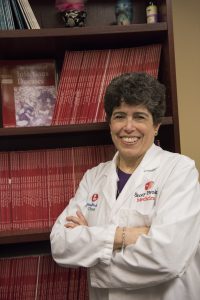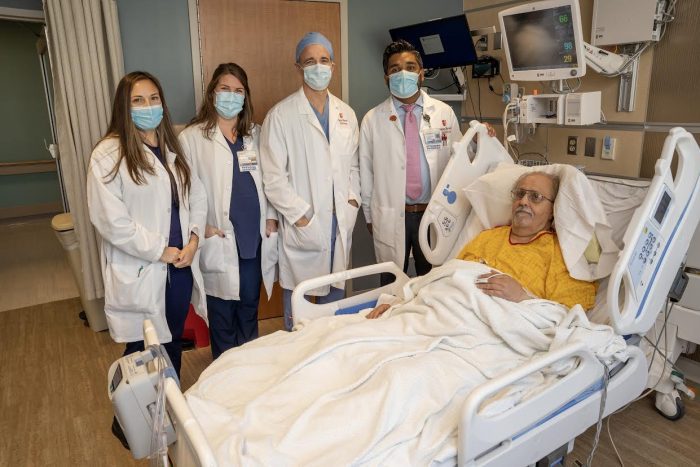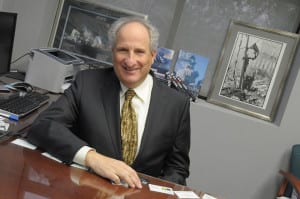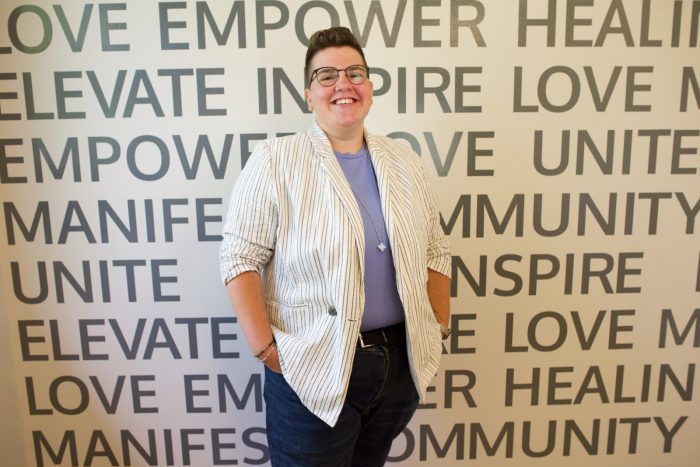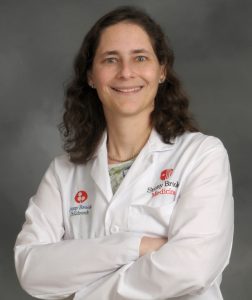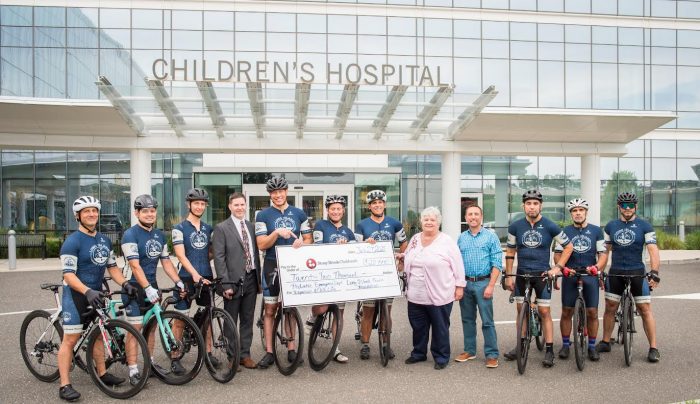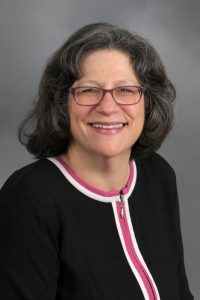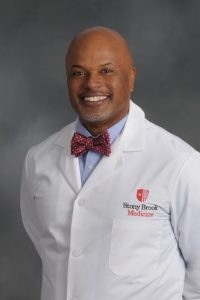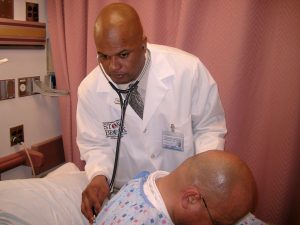Vermont State Police identified Dr. Mark Funt, a Setauket resident and Stony Brook Medicine doctor, as the man who died in a snowmobile crash in Cavendish, Vermont, Friday, March 10.
 Funt, 74, was operating a snowmobile along Main Street in Cavendish when it crashed. The doctor suffered fatal injuries. The incident is currently under investigation.
Funt, 74, was operating a snowmobile along Main Street in Cavendish when it crashed. The doctor suffered fatal injuries. The incident is currently under investigation.
According to the obituary submitted by his family, “He was doing what he loved most — spending time with his wife, children and grandchildren.”
Before Funt joined Stony Brook University, he attended The Emory University School of Medicine and was assistant professor at the Yale University School of Medicine, according to the Stony Brook Medicine website. Dr. Todd Griffin, vice dean for Clinical Affairs and vice president for Clinical Services at Stony Brook Medicine, said Dr. Martin Stone, founding chair of Obstetrics and Gynecology, recruited Funt in 1978 to be the chief of Gynecology and to start the Residency Program in Obstetrics and Gynecology.
In 1982, Funt founded Stony Brook Gynecology and Obstetrics. According to the Stony Brook Medicine website, he would lecture across the country and won numerous awards, including Attending of the Year. He also was recognized for his outstanding patient care.
Griffin described Funt as “a dedicated physician and beloved member of the Stony Brook Medicine family.”
“I had the pleasure of knowing him both personally and professionally for the past 30 years,” Griffin said.
The doctor added that the residency program Funt help founded will be graduating its 162nd resident this year.
“He had a tremendous impact on women’s health for Long Island,” Griffin said. “We are truly saddened by this tragedy, and extend our deepest condolences to his family, friends, colleagues and patients.”
Funt was named The Village Times Man of the Year in Sports in 1996 for his work in generating more than $100,000 in private contributions for a football stadium at Ward Melville High School. He also was in charge of assembling of the 15-member committee to work on the fundraising campaign.
Mary Barter, Three Village school district superintendent at the time, said, “Dr. Funt’s efforts have given a wonderful benefit to the school district and the children of our community.”
Obituary prepared by the Funt family
Mark Ian Funt died tragically in a snowmobiling accident on Friday, March 10, in Vermont. He was doing what he loved most — spending time with his wife, children and grandchildren.
Mark was born Aug. 21, 1948, in New York City. The oldest of four children born to Harold and Lila Funt, he took on a leadership role at a young age.
He ran on the track team at Syosset High School, graduating in 1966. His exemplary grades earned him a seat at Emory University. Mark stayed in Atlanta to attend Emory University School of Medicine, graduating in 1973. He completed his medical internship at New York University. Mark returned to Atlanta where he completed his residency in obstetrics and gynecology, serving as chief resident 1976-77.
He accepted a position as assistant professor of obstetrics and gynecology at Yale University in New Haven, Connecticut. Two years later, Mark moved to Setauket and was elemental in founding the department of Obstetrics and Gynecology at Stony Brook University in 1979. He served as associate professor and chairman of the OB-GYN residency program at SUNY Stony Brook. He is credited with delivering the first baby at the newly opened hospital. In 1982, Mark established his private practice in Setauket, while continuing to train residents at Stony Brook University Hospital.
Mark was a vibrant individual, typically with a smile on his face and an optimistic outlook on life. Many people looked up to him as a mentor and father figure, often seeking his guidance and advice. When the local high school was in need of a new athletic stadium, Mark spearheaded the project. He was recognized as the 1996 Man of the Year in Sports by The Village Times.
His greatest joy in life was spending time with his family and friends. Mark was a U.S. Coast Guard licensed boat captain and spent many wonderful days fishing with his three sons. He enjoyed spending time on the golf course with his wife Mary and friends. Mark’s greatest joy was entertaining his grandchildren, who all lovingly referred to him as “Poppy.” The outpouring of love from the community has been overwhelming and is a testament to the incredible man that he was. He will be greatly missed by his family and friends.
Mark is survived by his wife, Mary; mother Lila; brother David (Jody); sisters Syma (Bob) and Nancy (Dan); sons Seth (Elizabeth), Jared (Sarah) and Jordan (Holly); and eight grandchildren. Mark’s father Harold preceded him in death.



